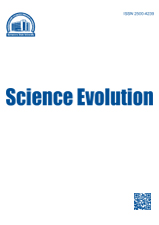Russian Federation
CSCSTI 27.01
CSCSTI 31.01
CSCSTI 34.01
The studies shows results of the 10-years research related to the frequency of chromosome aberrations in peripheral blood lymphocytes of North Ossetia inhabitants. The study of cytogenetic indexes in the blood of healthy individuals showed an increase in the average frequency of chromosome aberrations as time passed. The long-term cytogenetic study of North Ossetia residents’ blood showed the growth of medium frequency of aberrant metaphases from 2.07 ± 0.37 to 3.04 ± 0.16 in the group of adults and from 0.5 ± 0.25 to 1.9 ± 0.2 in the groups of children. The most significant increase among all studied cytogenetic indexes in groups of North Ossetia adults and children was in 2009 due to accidental release at one of the metallurgical enterprises in the capital city. All studied groups were characterized by prevailed acentric fragments among chromosome disorders, with an increase of all types of aberrations as time passed. There was a growth in the proportion of chromosome aberrations (adults had an increase of double fragments from 0.20 ± 0.11 to 0.60 ± 0.15 and chromosome exchanges from 0.27 ± 0.15 to 0.64 ± 0.13, children: from 0.13 ± 0.13 to 0.26 ± 0.12 and from 0 to 0.26 ± 0.20 respectively). Sex and smoking factors had no significant effect on the studied samples during the observation period. The 10-year (2002-2011) dynamics analysis of cytogenetic disorders has shown an intensification of mutagenic effects on residents of the republic, which were the most severe after accidental releases in 2009. The results of cytogenetic studies suggest that a mutagenic impact of chemical and radioactive nature takes place.
chromosome aberrations, mutagenesis, anthropogenic factors, environment, heavy metals
1. Bochkov N.P. Ekologicheskaya genetika cheloveka [Environmental human genetics]. Ekologicheskaya genetika [Ecological Genetics], 2003, vol. 1, no. 5, pp. 16-21.
2. Druzhinin V.G. Kolichestvennye kharakteristiki chastoty khromosomnykh aberratsiy v gruppe zhiteley krupnogo promyshlennogo regiona Zapadnoy Sibiri [Quantitative characteristics of the frequency of chromosomal aberrations in the group of residents of large industrial region of Western Siberia]. Genetika [Genetics], 2003, vol. 39, no. 10, pp. 1373-1380.
3. Sram R.J., Rossner P., Smerhovsky Z. Cytogenetic analysis and occupational health in the Czech Republic. Mutation Research, 2004, vol. 556, pp. 21-48.
4. Mateuca R., Lombaert N., Aka P.V., Decordier I., Kirsch-Volders M. Chromosomal changes: induction, detection methods and applicability in human biomonitoring. Biochimie, 2006, vol. 88, no. 11, pp. 1515-1531.
5. Norppa H. Cytogenetic biomarkers. IARC Sci Publ., 2004, no. 157, pp. 179-205.
6. Durnev A.D., Zhanataev A.K., Shreder O.V., Seredenina V.S. Genotoksicheskie porazheniya i bolezni [Genotoxic lesions and illnesses]. Molekulyarnaya meditsina [Molecular Medicine], 2013, no. 3, pp. 3-19.
7. Zaitseva N.V., Zemlyanova M.A., Alekseev V.B., Shcherbina S.G. Tsitogeneticheskie markery i gigienicheskie kriterii otsenki khromosomnykh narusheniy u naseleniya i rabotnikov v usloviyakh vozdeystviya khimicheskikh faktorov s mutagennoy aktivnost'yu (na primere metallov, aromaticheskikh uglevodorodov, formal'degida) [Cytogenetic markers and hygiene criteria for evaluating chromosomal disorders among population and workers under influence of chemical factors and mutagenic activity (on metals, aromatic hydrocarbons, formaldehyde)]. Perm: Knizhnyi format Publ., 2013. 222 p.
8. Menchinskaya O.V. Ekologo-geokhimicheskie aspekty tekhnogennogo zagryazneniya metallurgicheskikh tsentrov (na primere Vladikavkaza). Diss. kand. geol.-mineral. nauk [Ecological and geochemical aspects of technogenic pollution of the metallurgical centers (on the example of Vladikavkaz). Cand. geol.-mineral. sci. diss.]. Moscow, 2004. 135 p.
9. Skupnevskii S.V. Analiz sostoyaniya bioresursov v usloviyakh antropogennogo zagryazneniya okruzhayushchey sredy s ispol'zovaniem krys v kachestve test-sistemy. Avtoref. diss. kand. biol. nauk [Analysis of biological resources in the conditions of anthropogenic environmental contamination with use of rats as a test system. Cand. biol. sci. diss. thesis]. Vladikavkaz, 2006. 25 p.
10. Revich B.A. «Goryachie tochki» khimicheskogo zagryazneniya okruzhayushchey sredy i zdorov'e naseleniya Rossii ["Hot spots" of chemical contamination of the environment and public health of Russia]. Moscow: Akropol' Publ., 2007. 192 p.
11. Bochkov N.P. Metod ucheta khromosomnykh povrezhdeniy kak biologicheskiy indikator vliyaniya faktorov vneshney sredy na cheloveka [The method of accounting of chromosome damage as a biological indicator of the influence of environmental factors on human]. Moscow: Nauka Publ., 1974. 34 p.
12. Bochkov N.P., Chebotarev A.N., Katosova L.D., Platonova V.I. Baza dannykh dlya analiza kolichestvennoy kharakteristiki chastoty khromosomnykh aberratsiy v limfotsitakh perifericheskoy krovi cheloveka [The database for analysis of quantitative characteristics of chromosome aberration frequencies in the culture of human peripheral blood lymphocytes]. Genetika [Genetics], 2001, vol. 37, no. 4, pp. 549-557.
13. Boltina I. V. Ispol'zovanie pokazatelya «chastota aberratsiy khromosom» pri formirovanii grupp riska otnositel'no onkologicheskikh zabolevaniy [Using the indicator "frequency of chromosome aberrations" in the formation of risk groups regarding oncological diseases]. Tsitologiya i genetika [Cytology and Genetics], 2007, vol. 41, no. 1, pp. 66-74.
14. Lyubimova N.E. Vliyanie nizkodozovogo radiatsionnogo vozdeystviya na vozrastnuyu dinamiku chastoty spontannykh i indutsirovannykh in vitro khromosomnykh aberratsiy v limfotsitakh cheloveka. Avtoref. diss. kand. biol. nauk [Influence of low-dose radiation effects on age dynamics of the frequency of spontaneous and induced in vitro chromosomal aberrations in human lymphocytes. Cand. biol. sci. diss. thesis]. Moscow State University, 2007. 21 p.
15. Sram R.J., Rössner P., Beskid O., Bavorova H., Ocadlikova D., Solansky I., Albertini R.J. Chromosomal aberration frequencies determined by conventional methods: Parallel increases over time in the region of a petrochemical industry and throughout the Czech Republic. Chem Biol Interact, 2007, vol. 166, no. 1-3, pp. 239-244.
16. Chebotarev A.N., Bochkov N.P, Katosova L.D., Platonova V.I. Vremennye kolebaniya spontannogo urovnya khromosomnykh aberratsiy v kul'ture limfotsitov perifericheskoy krovi cheloveka [Temporary fluctuations in the level of spontaneous chromosome aberrations in the culture of human peripheral blood lymphocytes]. Genetika [Genetics], 2001, vol. 37, no. 6, pp. 848-853.










